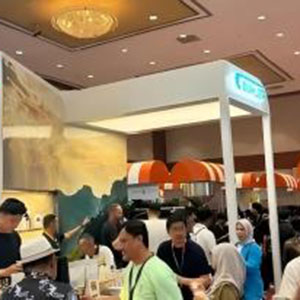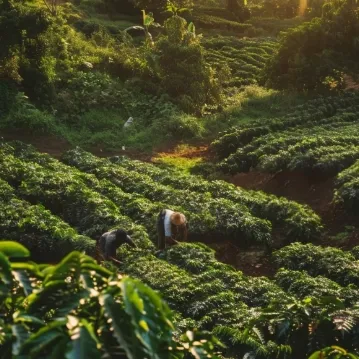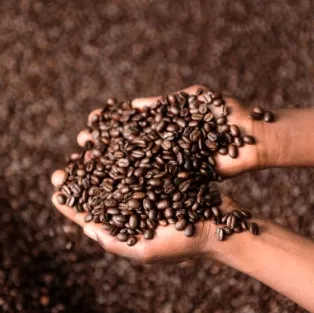
For many, especially younger generations in Asia, awakening the day with a rich and aromatic cup of coffee has become a daily ritual. As coffee consumption continues to rise globally, consumers are no longer just looking for a caffeine fix—they want unique flavors, premium taste, and convenient packaging formats like single-serving coffee pods and capsules.To thrive in this dynamic landscape, coffee retailers could embrace innovation and find innovative packaging solutions that cater to these changing demands. In this article, we will explore the latest trends in coffee packaging design, analyze global coffee consumption trends, and provide actionable insights on how to choose the best packaging solutions for your brand.
Popular Coffee Packaging Formats
Choosing the right coffee packaging is crucial for maintaining product quality, enhancing brand appeal, and engaging your target audience. Here’s a breakdown of the most popular coffee packaging formats and their benefits:

Traditional Packaging Solutions
| Film-Forming Gusseted Bags | Flexible, cost-effective, and ideal for bulk coffee storage, commonly used for whole bean coffee. |
| Stand-Up Pouches | Resealable, lightweight, and perfect for ground coffee to reach freshness preservation. |
| Glass Jars | These jars have Premium appeal and excellent protection for instant coffee against light and air. |
| Pillow Bags | are budget–friendly and widely used for small coffee portions. |
Single-Serving Coffee Packaging
| Sealed Bags (Three, Four Side, and Back Sealed) | are convenient and portable for travelers, suitable for instant coffees, drip bag coffees, and liquid concentrated coffees) |
| Coffee Pods & Capsules | The fastest-growing category, offering premium taste and convenience. |
The Evolution of Coffee Packaging:From Tin Cans to the Single-Serve
Modern coffee packaging is essential for preserving freshness, extending shelf life, and enhancing brand appeal. Without advancements in the packaging industry, today’s massive global coffee market would not be possible.
Late 1800s: The first coffee packaging machines in America streamlined paper bag filling, sealing, and wrapping.
1901: The American Can Company introduced tin-can packaged coffee, marking a major leap forward in coffee preservation.
1940s: Francesco Illy, founder of illycaffè, developed the pressurized packaging can, using gas to preserve coffee freshness for exports.
1960s: Nestlé introduced glass jars for instant coffee, replacing traditional cans.
1970s: The first generation of Nespresso coffee capsules revolutionized single-serve coffee.
1992: Keurig’s K-Cup system brought home-brewing convenience to consumers worldwide, making single-serve coffee a household staple.
Current Coffee Packaging: Single-serve coffee formats, including capsules, pods, and drip bags, dominate the market, offering unparalleled freshness and efficiency.

Marketing Considerations for Coffee Packaging Design
- Pricing Strategy Your packaging design should align with your pricing strategy. For example, premium coffee brands often use glass jars or stand-up pouches to convey quality, while budget brands may opt for pillow bags or stick packs.
- Potential Consumer Profiles Understanding your target audience is crucial. Younger consumers may prefer eco-friendly packaging, while busy professionals might prioritize single-serve options like coffee pods.
- Target Markets Aligning your packaging with local trends and regulations is necessary to ensure compliance and relevance in each specific market you aim to reach.Different regions have different preferences. For example, Asian markets often favor stick packs and drip bags, while European markets lean toward coffee capsules.
- Brand Identity Your packaging design should reflect your brand identity.Utilizing colors, logos, and design elements that clearly represent your brand will help create a lasting impression on consumers.
From Professional Production Side
- Durability and Freshness should not be overlooked. It is paramount to ensure that the materials you choose provide optimal protection against external elements that can compromise the quality and freshness of your coffee. Proper packaging will help maintain the integrity of the product from production to consumption, ensuring customer satisfaction.
- Oxygen is the tricky problem in ensuring coffee quality, developing a almost oxygen-free package would be a excellent solution.
- Machines should be compatible with your coffee package in order to generalize high-effective production line. Family sized coffee and single-serve coffee are manufactured through different type of filling, sealing, and cartoning machines.
- Legal Requirements must be taken into accounts when designing coffee packaging,such as traceability requirements,fair trade compliance,the country of origin of the coffee beans,and so on.
Transforming from Bulk to Single-Serve
| Choosing the Right Packaging Format: Businesses shifting from bulk packaging must select suitable single-serve solutions |
|
| Design Your Packages |
|
| Investing in High-Quality Machinery |
|
Conclusion
The shift from large coffee packaging to single-serve formats is reshaping the industry. Convenience, freshness, and variety are driving this evolution, making it imperative for brands to adapt. Investing in innovative packaging solutions and efficient machinery will ensure businesses stay ahead in the competitive coffee market.
Are you ready to make the transition? Contact us today to learn more about our advanced coffee capsule filling and sealing machines and take your coffee brand to the next level!
Common Questions about Coffee Packaging
- What are the benefits of using coffee capsules and pods?: Coffee capsules and pods offer the ultimate convenience, ensuring a fresh cup of coffee with minimal effort. They are perfect for home and office use, and they work with various brewing systems like Nespresso and Keurig. Additionally, they help preserve the coffee’s flavor and freshness, making them a popular choice among coffee enthusiasts.
- How does your coffee packaging maintain freshness?: We use advanced nitrogen filling technology to create an oxygen-free environment in our packaging. This ensures that the coffee remains fresh for longer periods, preserving its aroma and flavor. Our packaging materials are carefully selected to provide optimal protection from external elements.
- What packaging options are available for single-serve coffee?: We offer a range of single-serve coffee packaging solutions, including coffee capsules, drip bags, and sealed stick packs. These formats are ideal for consumers seeking convenience and portability, whether they’re at home, in the office, or traveling.
- How do I transition from bulk coffee packaging to single-serve formats?: To transition from bulk to single-serve packaging, you need to choose the right format, such as coffee capsules, pods, or drip bags, that aligns with your customer needs. Our machinery can support this shift by efficiently filling and sealing these formats. We also provide guidance on packaging design and optimizing production for the best results.
- Can you provide machinery for packaging coffee in single-serve formats?: Yes! We offer specialized machinery for coffee capsule filling and sealing, as well as high-speed equipment for sealed bags and drip coffee bag packaging. Our machines are designed to maintain freshness, optimize production, and ensure consistency across large batches.
- What makes your coffee packaging machines different from others?: We offer specialized machines for various formats like coffee capsules, pods, and sealed bags, including high-speed options and nitrogen filling technology that maximizes freshness. Our equipment is built to meet the needs of both large-scale producers and smaller businesses transitioning to single-serve formats.
- Are your packaging solutions customizable?: Yes, we offer customizable packaging solutions that can be tailored to your brand’s identity. From different pouch types to custom printing options, we ensure your packaging stands out and reflects your brand’s unique story and vision.
- How do I choose the best packaging format for my coffee product?: Selecting the right packaging format depends on several factors, including your product type, target audience, and market trends. For example, coffee capsules are ideal for premium coffee, while drip bags and stick packs are great for convenience and portability. We can help you assess your options and select the best format based on your goals.
- Can I integrate your packaging machinery with my existing production line?: Yes, our machines can be integrated into your existing production line. We offer solutions that are compatible with various setups, ensuring a seamless integration process and helping optimize your overall production workflow.




